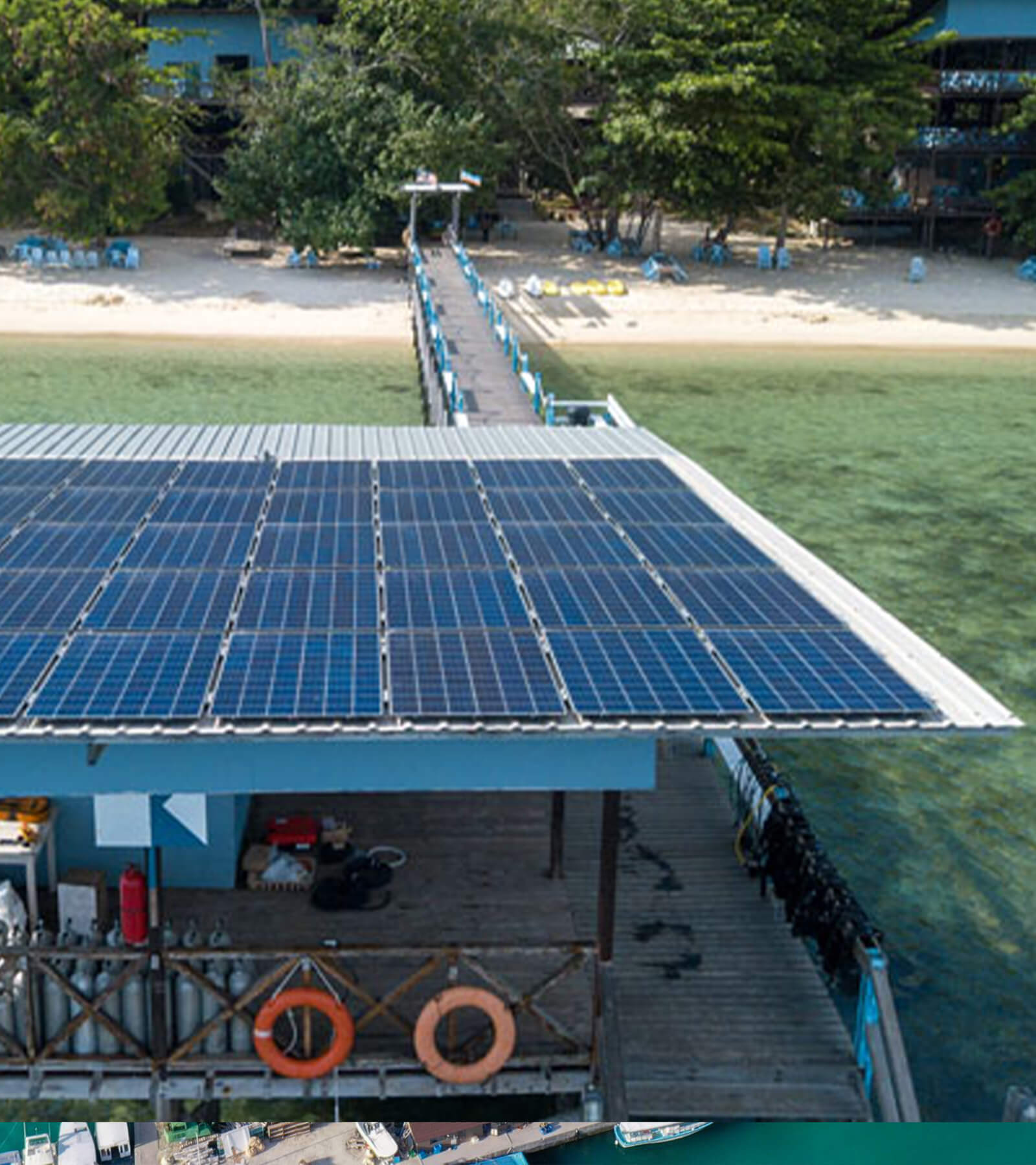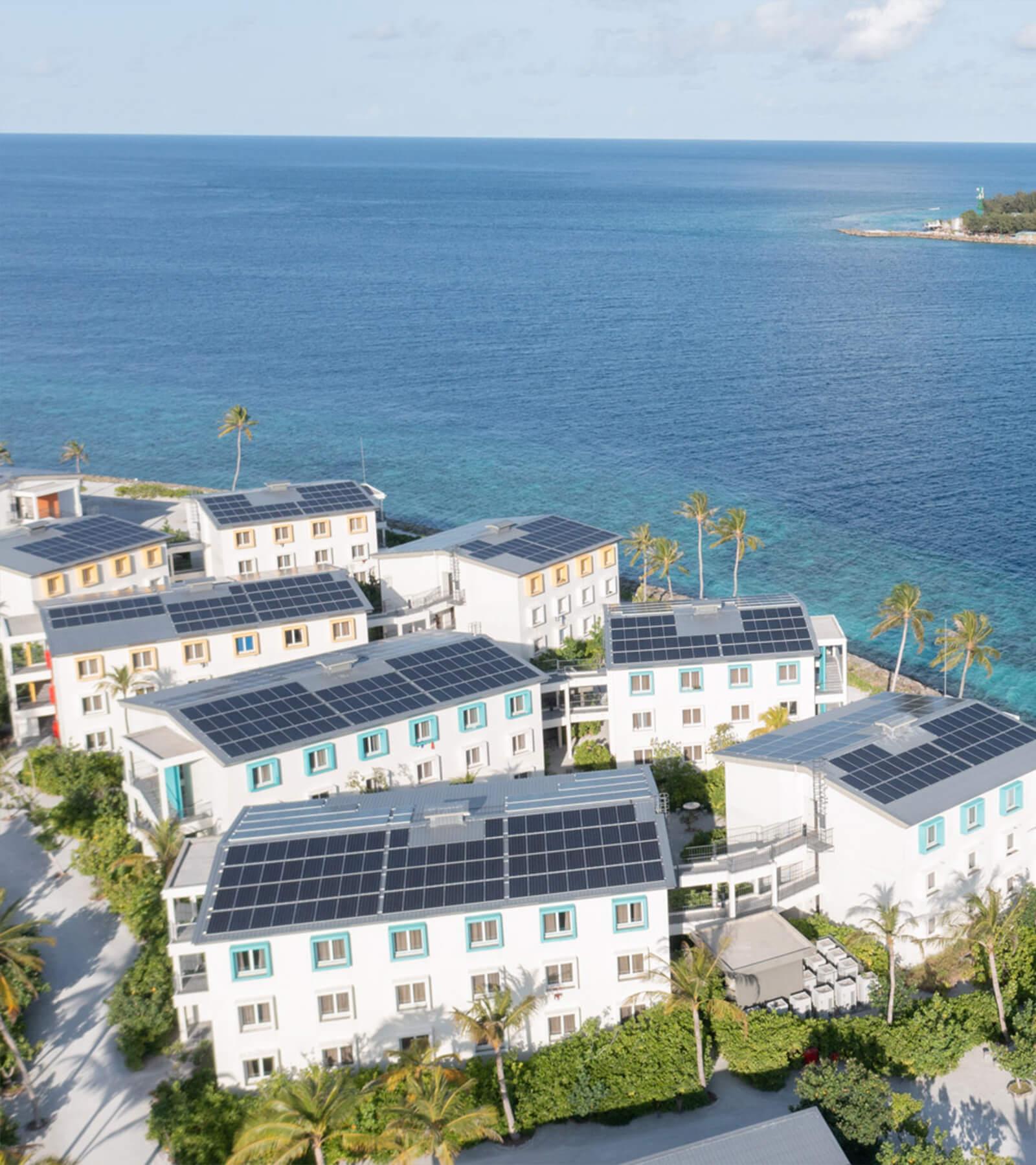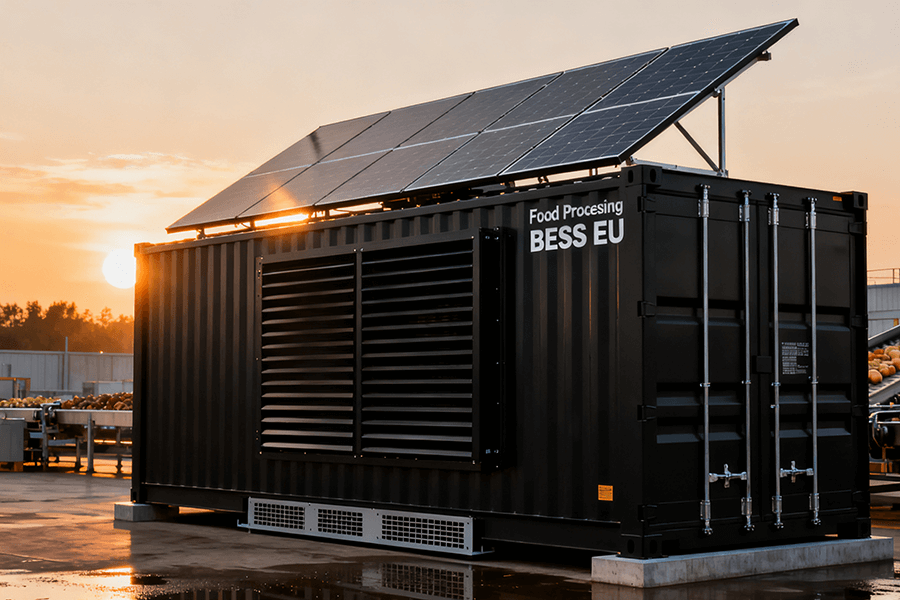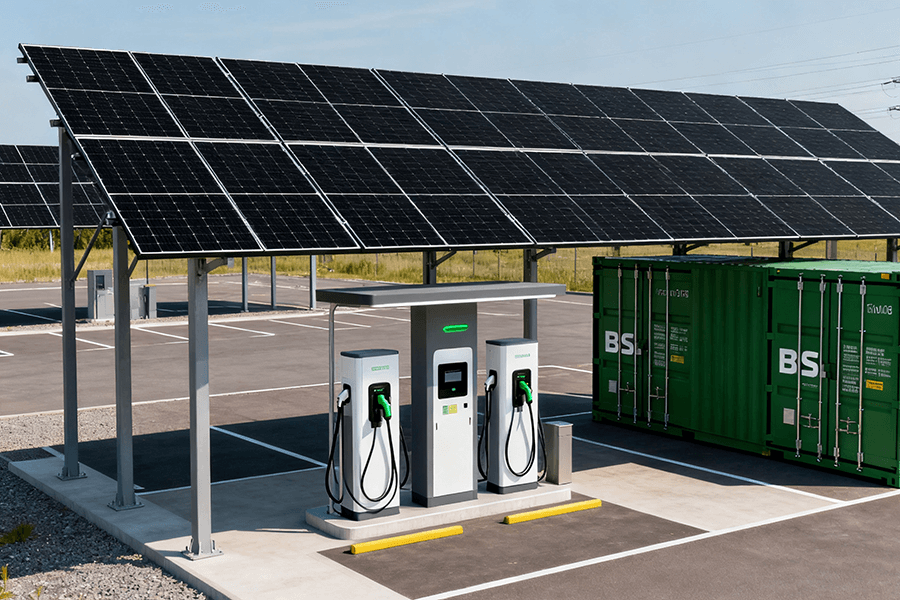
Powering EU Smart Cities with a €3.5B Vision
The EU’s Smart Cities and Communities program: A €3.5 billion vision
The EU’s Smart Cities and Communities program isn’t just about futuristic streetlights or app-controlled public transit. It’s a €3.5 billion investment aimed at making urban energy grids as intelligent as the people who inhabit them. At the heart of this revolutionary initiative? AI-Enabled BESS Containers (Battery Energy Storage System containers) — the unsung heroes that transform erratic renewable energy into a reliable, city-sized power bank.
The grid’s “energy butlers” in action
These containers function as the grid’s “energy butlers,” operating with remarkable efficiency:
- During peak renewable production — such as sunny afternoons or windy evenings, when solar panels and wind turbines generate excess power — BESS containers kick into gear. They absorb the surplus electricity, storing it in their advanced battery cells.
- When demand surges — like early evenings when residents return home and power up lights, appliances, and heating systems — the stored energy is seamlessly fed back into the grid, maintaining a stable power supply.
From storage to intelligence: The AI integration
What truly distinguishes AI-Enabled BESS Containers is their integration of artificial intelligence, evolving them from basic storage units into intelligent energy management systems. Leveraging machine learning algorithms, these containers analyze a wide range of data points:
- Historical energy consumption patterns
- Weather forecasts
- Real-time grid conditions
This data-driven approach empowers them to:
- Predict future energy demands with high accuracy
- Adapt charging and discharging schedules in response to demand fluctuations
- Anticipate and troubleshoot potential issues before they disrupt the energy flow
It’s akin to having a smartphone that not only charges itself but also:
- Provides detailed diagnostics
- Predicts battery failures
- Initiates self-repair processes — all while you sleep.
The numbers behind the innovation
The hype surrounding AI-Enabled BESS Containers is well-founded, especially in the context of the EU’s ambitious goal to cut urban carbon emissions by 50% by 2030. A 2024 report from the European Commission underscores their significant impact:
| City | Potential Fossil Fuel Reduction | Annual CO₂ Emissions Avoided | Equivalent Car Removal |
|---|---|---|---|
| Barcelona | 28% | 1.2 million tons | 260,000 |
| Berlin | 28% | 1.5 million tons | 325,000 |
| Total (major EU cities) | – | 4.2 million tons | 913,000 |
This data, sourced from the European Commission – Smart Cities Marketplace, underscores how smart energy storage can revolutionize urban energy landscapes. By reducing reliance on fossil fuels, AI-Enabled BESS Containers contribute significantly to a cleaner, greener, and more sustainable future for EU cities.
Machine Learning: The Brains Behind the Battery
Let’s talk about the AI magic. These BESS (Battery Energy Storage System) containers aren’t just big batteries—they’re data crunchers with a knack for saving cash. Leveraging advanced artificial intelligence, they transform raw data into actionable insights, revolutionizing how energy is managed in smart cities across the EU.
The Dual Pillars of AI-Enhanced BESS Functionality
Load Forecasting: 92% Accuracy (No Crystal Ball Required)
1. Data-Driven Analysis Framework
Machine learning algorithms analyze a symphony of data points. Historical energy usage is scrutinized down to the hour, revealing patterns that vary by season, day of the week, and even time of day. Real-time weather forecasts play a crucial role, as cloud cover can significantly affect solar input, and temperature swings directly impact heating and cooling demands. Additionally, local events, such as a football match drawing 50,000 fans or a music festival with 100,000 attendees, are factored in, as these gatherings can cause sudden spikes in electricity consumption.
2. Real-World Impact in Lisbon
The result? According to a 2025 study by the Fraunhofer Institute, this comprehensive analysis enables a remarkable 92% accuracy rate in predicting how much power the city will need. In Lisbon, this precision has been a game-changer:
- Summer Heatwave Case Study: During periods of extreme heat when air conditioning demand spikes, the city was able to reduce energy waste by 18%.
- Grid Optimization: Instead of overloading the grid with backup power, the BESS container released stored energy exactly when needed, smoothing out the demand curve and saving the city €87,000 in a single month.
Predictive Fault Detection: Stopping Problems Before They Start
1. Paradigm Shift in Maintenance
Traditional BESS maintenance follows a reactive model, much like taking your car to the mechanic only when it breaks down—costly and inconvenient. AI-enabled BESS containers, however, change the game by adopting a proactive approach. These systems continuously monitor a wide range of parameters, including:
- Temperature fluctuations
- Voltage irregularities
- Battery cell degradation in real time
2. Anomaly Detection in Action
Using sophisticated anomaly detection algorithms, the AI system can identify deviations from normal operating conditions. It flags issues, such as a faulty cooling fan or a declining module, weeks before they have the potential to cause outages. In Copenhagen, this proactive approach proved invaluable in 2024:
- Early Warning Example: The AI system detected a minute 0.5% drop in efficiency in one battery module, a subtle sign that could easily have gone unnoticed.
- Cost-Benefit Analysis: This triggered a maintenance check, which revealed a loose connection. Fixing the issue cost a mere €200. Had the problem been allowed to escalate, it would have resulted in a potential 12-hour blackout in a residential district, costing an estimated €45,000 in emergency repairs and lost productivity.
| Metric | Traditional BESS | AI-Enabled BESS | Improvement |
|---|---|---|---|
| Load Forecasting Accuracy | ~65-75% | 92% | +23-27 percentage points |
| O&M Cost Reduction | N/A | 30% | €120,000/year (10 MWh system) |
| Fault Detection Lead Time | Reactive (after failure) | 2-4 weeks proactive | N/A |
IoT Integration: When the City Becomes a Connected Energy Ecosystem
A BESS container in isolation is useful, but when it joins forces with a city’s IoT network? It transforms into a data-driven powerhouse, revolutionizing urban energy management.
Real-world Applications
Let’s explore how this synergy unfolds across diverse EU smart cities:
Paris: Optimizing Street Lighting
In the City of Lights, smart streetlights are more than just illuminators—they’re data sensors. When pedestrian traffic drops below 5 people per minute, the lights automatically dim by 30%. This triggers a cascading effect:
- Energy Reallocation: The BESS container reduces stored energy allocation for lighting by 2.3 MWh nightly, optimizing usage during low-demand periods.
- Predictive Analytics: By analyzing historical footfall data, the system anticipates peak and off-peak hours, further enhancing energy efficiency.
Amsterdam: Powering Sustainable Events
During Amsterdam’s 100% solar-powered “Zand Festival” in 2024, the BESS container demonstrated its true potential:
- Device Coordination: It seamlessly interacted with over 5,000 IoT-connected devices, including solar panels, food trucks, and stage equipment.
- Dynamic Response: When clouds temporarily reduced solar input by 40%, the BESS container released stored power in 90-second increments. This ensured uninterrupted operations, keeping the festival vibrant without relying on fossil fuel backups.
Eindhoven: Scaling Renewable Energy
Eindhoven, a frontrunner in smart city innovation, achieved remarkable results:
| Metric | Before IoT Integration | After IoT Integration |
|---|---|---|
| Energy Distribution Efficiency | N/A | 41% improvement |
| Additional Homes Powered | N/A | 15,000 |
This means Eindhoven can now power the equivalent of a new neighborhood without constructing additional power plants, showcasing the scalability of IoT-integrated BESS systems. (Source: Eindhoven Smart City – 2024 Annual Report)
The Ripple Effect of Integration
These case studies highlight that the synergy between BESS containers and IoT networks isn’t just a technological marvel—it’s a blueprint for sustainable urban development. By leveraging real-time data, cities can optimize energy consumption, reduce costs, and minimize their carbon footprint, paving the way for a greener future.
Conclusion: Scalability, Compatibility, and Why Size Matters
Unrivaled Adaptability
The true marvel of AI-Enabled BESS Containers lies in their unparalleled adaptability, resembling a bespoke garment that evolves in tandem with a city’s energy needs. This adaptability is best illustrated through real-world examples:
- City with Low Energy Demands: Luxembourg City, a compact urban hub, has a specific energy requirement of 5 MWh. Deploying an AI-Enabled BESS Container to meet this demand is a straightforward process.
- City with High and Growing Energy Demands: Contrastingly, consider the energy demands of a sprawling metropolitan area like Milan. As the city experiences growth and increased energy consumption, scaling up to 50 MWh is a seamless operation. Thanks to the modular design of these containers, additional modules can be effortlessly integrated. This eliminates the need for expensive and disruptive grid overhauls, a significant advantage given the International Energy Agency’s (IEA) projection that 70% of EU cities will need to double their energy storage capacity by 2030. The modularity of BESS containers ensures that this expansion can be achieved without the associated headaches and financial burdens.
Exceptional Interoperability
Another notable strength of AI-Enabled BESS Containers is their exceptional interoperability. They can seamlessly integrate with leading AI platforms such as IBM Maximo and Siemens MindSphere. This compatibility spares cities from the costly and time-consuming process of discarding existing systems, making the adoption of AI-Enabled BESS Containers a more attractive and practical solution for EU’s smart cities.
| Platform | Integration Benefit | Impact |
|---|---|---|
| IBM Maximo | Utilizes BESS data to optimize maintenance schedules across entire utility networks | Reduces downtime by 22% in pilot programs |
| Siemens MindSphere | Combines BESS insights with traffic and weather data to predict energy demand spikes | Achieves 89% accuracy in demand prediction |
IBM Maximo, for example, harnesses data from BESS containers to streamline maintenance schedules across entire utility networks. In pilot programs, this approach has led to a remarkable 22% reduction in downtime. Siemens MindSphere, on the other hand, takes a holistic approach by integrating BESS data with traffic and weather information. This enables the platform to predict energy demand spikes with an impressive 89% accuracy, a valuable asset for various scenarios, from planning for extreme weather events like heatwaves to managing energy consumption during peak shopping seasons such as holidays. (Source: IBM – Maximo for Energy & Utilities)
About Maxbo Solar: Your Partner in Smart Energy
Our Vision: Pioneering the Future of Urban Energy
At Maxbo Solar (www.maxbo-solar.com), our mission transcends the mere construction of Battery Energy Storage System (BESS) containers. We are actively shaping the future of urban energy landscapes, one smart city at a time. Our innovative AI-Enabled BESS systems are meticulously engineered from the ground up, designed to seamlessly integrate with the European Union’s smart city frameworks. Leveraging cutting-edge artificial intelligence, these systems have demonstrated remarkable capabilities, achieving an impressive 92% load forecasting accuracy and delivering significant operational efficiency gains, resulting in 30% savings in Operations & Maintenance (O&M) costs—benchmarks that cities like Eindhoven have come to rely on for sustainable and reliable energy management.
Tailored Solutions for Diverse Urban Needs
We recognize the unique characteristics and energy demands of each city. To address this diversity, our BESS container offerings feature a modular design philosophy that caters to a wide spectrum of requirements:
- Compact Solutions for Historic Centers: Starting at 5 MWh, our smaller-scale systems are the perfect fit for cities with historic city centers, where space constraints and architectural preservation considerations demand efficient yet unobtrusive energy storage solutions.
- Scalable Power for Metropolises: For sprawling metropolises with substantial energy consumption, our systems can scale up to an impressive 100 MWh, ensuring robust energy storage capabilities to meet the dynamic needs of large urban populations.
Seamless Integration with Existing Ecosystems
Interoperability is at the core of our technology. Our BESS systems are engineered to play well with other leading platforms and networks, facilitating hassle-free integration:
- Enterprise Asset Management: Our systems seamlessly sync with IBM Maximo, enabling comprehensive asset management, predictive maintenance, and lifecycle optimization.
- Industrial IoT Platforms: Compatibility with Siemens MindSphere allows for real-time monitoring, data analytics, and intelligent decision-making, enhancing the overall performance and reliability of the energy storage infrastructure.
- IoT Networks: We support all leading IoT networks, ensuring that our BESS containers can be effortlessly incorporated into existing smart city ecosystems, reducing implementation complexities and accelerating time-to-value.
Driving the True Value of Smart Cities
In essence, the essence of smart cities extends beyond the adoption of flashy technology. It is about leveraging innovation to enhance the quality of life for urban dwellers:
- Cost Savings: By optimizing energy consumption and reducing operational costs, our BESS solutions contribute to lower energy bills for residents and businesses.
- Environmental Benefits: Through efficient energy management and increased integration of renewable energy sources, our systems help reduce carbon emissions, leading to cleaner air and a more sustainable urban environment.
- Reliable Power Supply: With advanced load forecasting and energy storage capabilities, our BESS containers ensure a stable and reliable power supply, eliminating concerns about power outages during adverse weather conditions or peak demand periods.
At Maxbo Solar, we are fully committed to supporting the realization of these goals, powering the transition towards smarter, more sustainable cities across the European Union.












